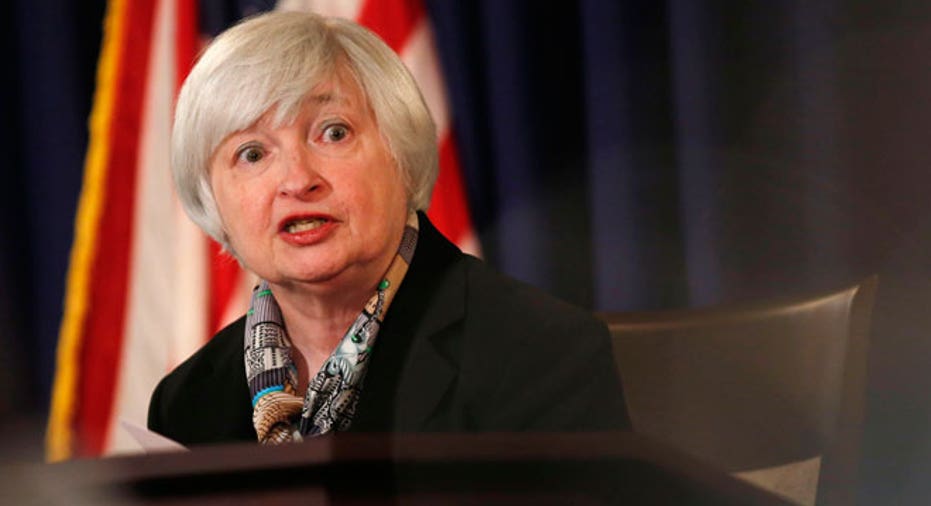Lone FOMC Dissenter Explains His Dissent

Janet Yellen just concluded her first policy meeting and press conference as the newly-installed head of the Federal Reserve, and already she’s got a bit of an uprising to quell.
The lone dissenter to policy shifts announced this week by the Federal Open Market Committee issued a public statement on Friday critical of the central bank’s new strategy.
Minneapolis Fed President Narayana Kocherlakota said he disagrees with the decision to throw out an unemployment rate threshold for raising short-term interest rates.
More than a year ago, the Fed said it would consider raising the key federal funds rate (the rate banks charge each other for overnight loans) when the unemployment rate fell to 6.5%.
When that announcement was made the unemployment rate stood at 7.9%. As the rate has fallen over the past 12 months – and not always for the right reasons – markets questioned whether the Fed would stick to that threshold.
On Wednesday the FOMC tossed the unemployment threshold and said it would use an array of economic indicators to determine future interest rate policy instead.
More than a few analysts criticized the decision, saying it was too vague.
Kocherlakota takes a slightly different tack, saying the new policy weakens the Fed’s credibility with regard to its commitment toward a 2% inflation target and fosters uncertainty which could restrain economic growth.
The new forward guidance “does not communicate purposeful steps being taken to facilitate a more rapid increase of inflation back to the 2 percent target,” Kocherlakota wrote.
That lack of communication, he added, suggests the FOMC views persistently low inflation “as an acceptable outcome.”
Furthermore, Kocherlakota said by eliminating the 6.5% unemployment threshold and not replacing it with any other specific thresholds, the Fed is creating uncertainty about what the central banks is willing to do to promote growth.
He suggests setting a 5.5% unemployment rate threshold for raising interest rates contingent on inflation remaining below 2.25% and a lack of obvious threats to financial stability.
That more specific guidance would tell markets the Fed is ready to use monetary policy to push inflation toward its 2% target rate and also reduce uncertainty “by being clearer about the kinds of labor market and inflation conditions that are likely to be associated with an increase in the fed funds rate,” Kocherlakota said.
Yellen defended the decision to eliminate the 6.5% threshold during her press conference, saying it will be more useful going forward for the FOMC to use “a broad range of information” to determine future interest rate policy.
Regarding inflation Yellen said, “we are fully committed to the 2% inflation objective, and we do not want to undershoot inflation for a prolonged period of time.”